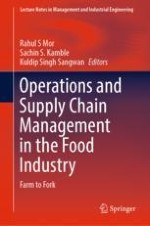This book offers effective and competitive food supply chains that are the consequence of technological innovation, collaboration, small agri-food business cases, entrepreneurial opportunities, cold chain technology management, disruptive technologies, and performance assessment through empirical analysis, case studies, and multimethod research in the food industry. The book comprehensively covers different interfaces of the food supply chain including procurement, processing, distribution, consumer, i.e., farm to fork. It provides solutions to various challenges such as globalization, food recalls, technological innovations, and consumer trust. This book will be of interest to researchers in the areas of the food supply chain, operations management, industrial engineering as well as professionals in the agri-food and allied industry.
